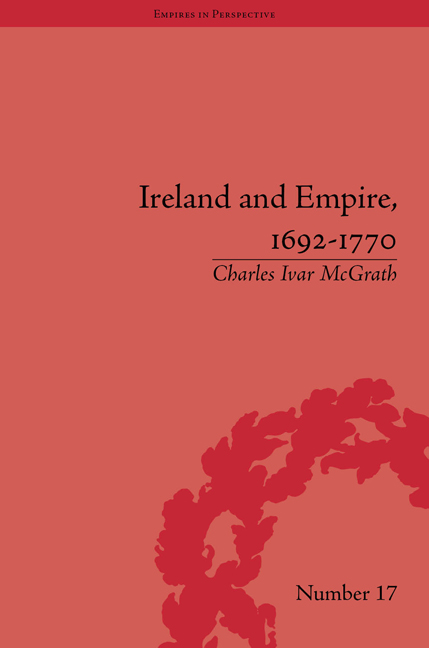5 - A Standing Army for Ireland
from Part 2 - Manpower
Summary
Ireland's major contribution towards the empire in the period 1692–1770 was the financing, housing and general maintenance of a peacetime standing army that was capable of going to war in Britain's interest at short notice. The central focus in practical terms for facilitating that contribution was the general maintenance of the army in Ireland on an annual basis, and it was this activity that was reflected in the government's annual military establishment and the regular debates and considerations of the Irish parliament. This chapter is concerned with the size and regulation of the army and its logistical and financial administration, and the centrality of these concerns within Irish political life. It provides an assessment of the strength and readiness of the army in Ireland and the cost. It also includes a consideration of recruitment policies.
In discussing the British military in the eighteenth century, John Brewer pointed out that no country ‘could afford to sustain the expense of continuous fulltime mobilization’. Instead, in peacetime the army needed to be reduced in size. For the first half of the century the British peacetime army numbered ‘about 35,000’, and after the Seven Years’ War it increased to 45,000. This army was stationed in
mainland Britain, in those outposts of the empire such as Gibraltar, which required constant protection and, above all, in Ireland. This had the advantage … that a large proportion of the peacetime force was kept on the Irish establishment, funded by the Irish taxpayer and kept out of view of the English parliament. But they could be transferred quickly to England if the need arose. In short … England, like the other great powers of Europe, had a standing army – a body of professional ‘effectives’ which was in a constant state of readiness and which provided the core around which a wartime army was built.
This assessment highlights the central importance of Ireland, which provided a home for, and covered the cost of maintaining, the single largest part of the British peacetime professional army and the core of the wartime army.
- Type
- Chapter
- Information
- Ireland and Empire, 1692–1770 , pp. 107 - 142Publisher: Pickering & ChattoFirst published in: 2014



